A few months ago, a very generous customer offered to donate their Grandfather’s piano.
- Milk Paint comes in powder form. Each bag makes about one quart of paint, depending on the consistency of your mixture, however you mix it as you go because leftover paint will only keep for a few days until it either hardens or spoils.
- Milk Paint is the oldest paint on the market and will give you a truly authentic, primitive look even if you painted with it yesterday. It’s tendency to chip and flake makes it look naturally aged rather than manufactured.
- Because you control the consistency of Milk Paint with your mixing process, the paint is incredibly versatile. You can have a watered down version which will act more as a wash and absorb into the wood and grain rather than cover it or you can thicken your mixture with extra powder creating a denser “paste-like” mix that has great coverage.
- Milk Paint takes multiple coats for adequate coverage (usually). As in the case of the piano, three coats of Milk Paint was applied.
- The colors and shades of Milk Paint will look different on different finishes. Therefore, you could paint three pieces in a room the exact same color, but if the original finishes vary from natural wood to a painted finish to a dark wood finish…high gloss versus unfinished…the same batch of Milk Paint will have slight variations in color. Personally, I think that is one of the coolest things about Milk Paint.
- I always tell customers Milk Paint probably isn’t the paint for you if you are a control freak. It is a paint that demands flexibility because it has a mind of its own and may or may not chip…and it may chip a lot…like really, a lot!!!
- There is no other paint that will give you the natural aged, chippy look. I’ve looked. I’ve tried to manipulate other paints to get that look with no success.
- Chalk Paint® comes in traditional quart size cans, ready to be used…no mixing involved.
- The colors are highly pigmented and (usually) require only one coat of paint. The exceptions are for the whites and brights, you almost always need two coats. But, the mid-tone, warm colors rarely require more than one coat of paint…even over red…even over high gloss dark cherry wood.
- What you pay for in product, you save in time. There is no sanding, stripping or priming required.
- Chalk Paint® is water based, making it extremely easy to manipulate and clean up. Distressing furniture is as easy as using a wet washcloth, damp sanding blocks, baby wipes or fine sand paper.
- Chalk Paint® with a proper wax application is highly durable, water resistant and able to be applied to ANY surface….really! Any! Metal, wood, concrete, laminate, tile, glass, veneer, fabric, leather, drywall…and so on.
So, when do I differentiate between which paint I should use for a given project?
I use Milk Paint on very old pieces of furniture that have a rich history. I want that old piece to look like it sat in an old farmhouse and was exposed to years of weathering, light exposure and life.
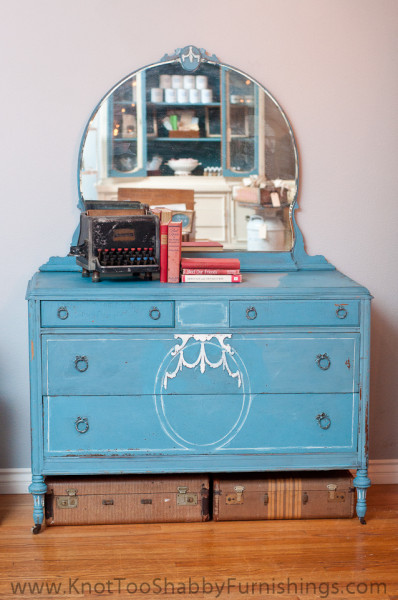 |
||
| Miss Mustard Seed’s Milk Paint in French Enamel |
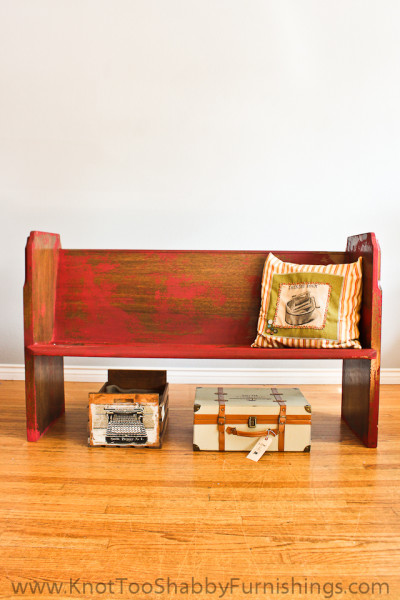 |
||
| Vintage Pew in Tricycle Red |
I also use Milk Paint on pieces that I want to have a lot of chipping or a multi-color layered look.
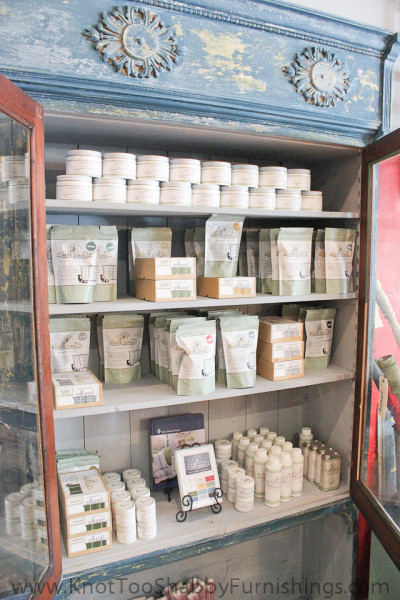 |
| 5-Color finish with Hemp Oil Resist between coats-Lucketts Green, Linen, Shutter Gray, French Enamel and Flow Blue |
Chalk Paint® is my go to paint for pieces of furniture that I want to have more control over the finished product.
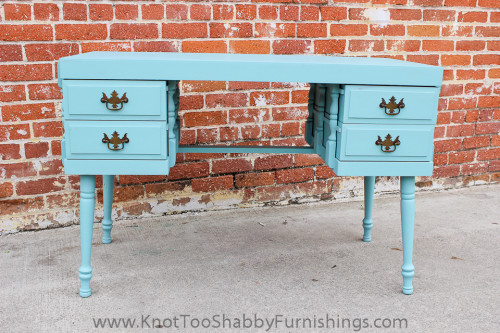 |
||
| Provence with no distressing |
Chalk Paint® is ideal for decorative finishes…like two-color detailing and stenciling. Because it is so easy to manipulate, you can’t mess it up.
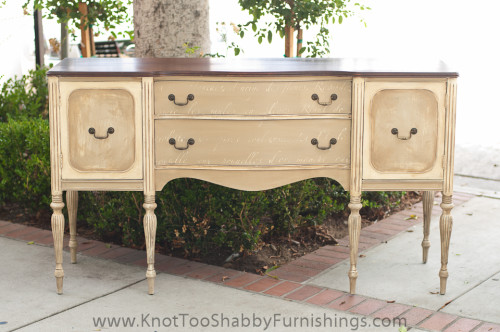 |
|||||
| Coco and Old White with Stencil Finish, two-color distress and light distressing |
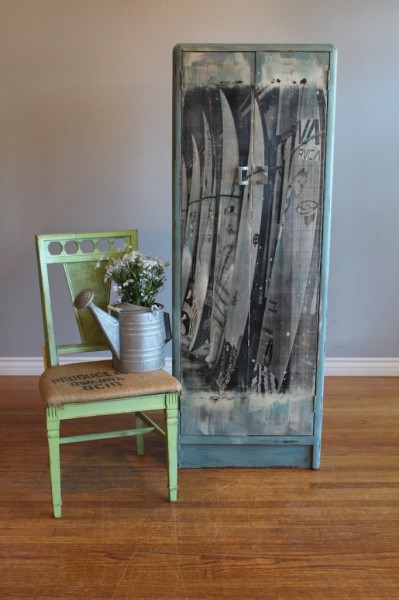 |
| Metal Cabinet in Provence and Old White with Image Transfer Treatment |
So, that’s my pitch in regard to the basic differences between Chalk Paint® and Milk Paint and when/why I choose one over the other….in a nutshell. There are always exceptions. It would just take me too long to write about all of those exceptions.
Feel free to comment below with any questions! I will happily answer any of your paint related questions. And, you can join our knot too shabby painters group on facebook to share projects, ask questions and receive paint-related support.


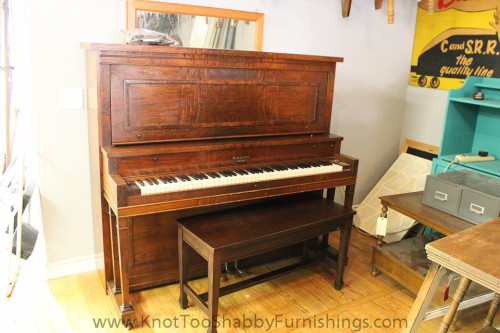
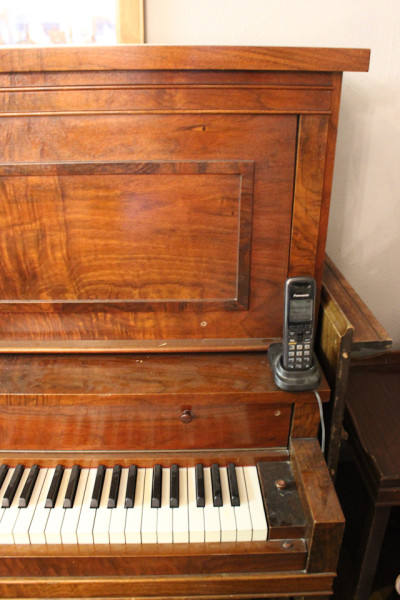
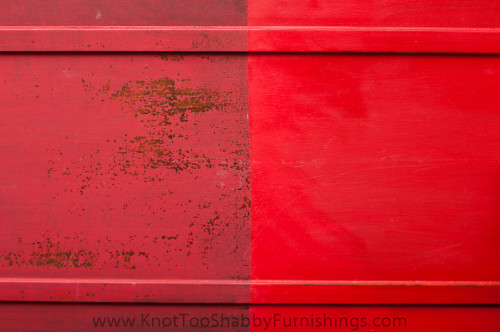
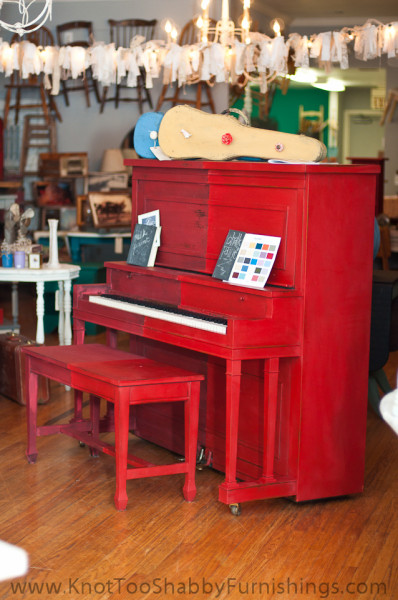
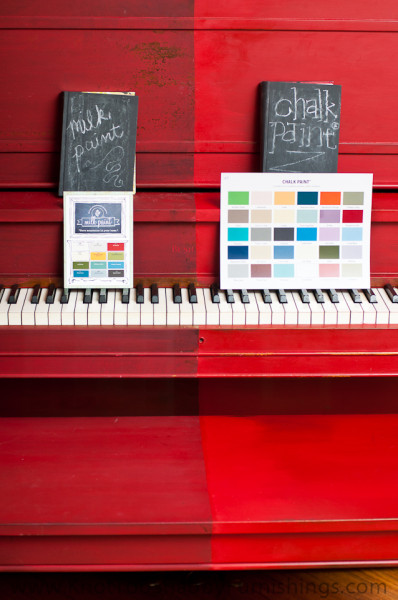

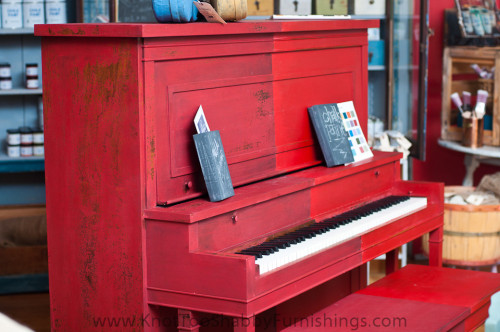

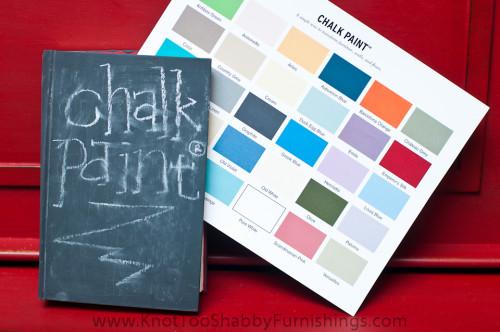

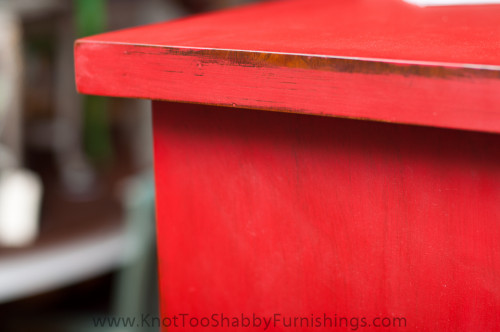

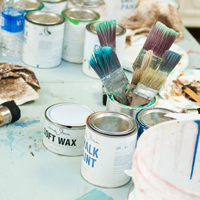
This is a wonderfully informative post! Thanks so much. Years ago when I first used milk paint, I thought it was most effective on raw wood.
Oh wow, this post is wonderful! I also get asked this all the time, so I am sharing this right away on my facebook page. Also wonderful, because I have had this piano sitting in my work space for so long ready and waiting to paint! You have inspired me. I don’t think I’ll be painting half and half, but I appreciate your purpose in showing the two paint qualities and differences. Such a fantastic idea! Thanks again for posting this.
Great post, thanks for sharing.
I prefer the left side….I even surprised myself because normally I LOVE the ASCP Emperor’s Silk with dark wax. But perhaps this is a case of “scale.” In this case I like the older, subtler and more chippier version. I am shocked! This was a most interesting “comparison” after all.
Small House / Big Sky Donna / White Oak Studio Designs / SW Michigan
Hand-Painted Vintage Furniture Transformations
Blog: http://smallhouseunderabigsky.wordpress.com
Facebook: donnaallgaierlamberti@facebook.com (for portfolio of chalk painted work)
Thank You So Much!! Wonderful Information.
Michele I couldn’t message you on Facebook, could you please add Nest Vintage Home Furnishings to the Knot Too Shabby Painters page? Thanks!
I am so happy I read this informative article. I just received a free piano very similar to yours. It was painted over in a French vanilla color – probably a long time ago – and now it’s dirty-looking. I’ve been looking into the annie sloan paint – perhaps the pure white or old white. Any suggestions/tips you can give me or even your opinion on Annie Sloan vs. Miss Mustard? Thanks so much.
Milk paint does not chip…
Hi Michele,
I’m a blogger from Colorado, but a southern California native {from Diamond Bar, and lived in Glendora for a time}. I’m going to be in the area in a couple of weeks and am hoping to get up to visit your shop, and hopefully make my very first Chalk Paint purchase! Look forward to visiting with you!
Jeanette
Creating a Life
Thank you so much for this article. I couldn’t decide between Milk or Chalk Paint for my kitchen table redo until reading your article. 🙂
Thank very much for the information. I was wondering what type of paint would work best on my furniture and now I know!
Have you ever painted milk paint over chalk paint for the chippy look?
Patti-Ann. I have used milk paint over chalk paint, but not for a chippy look. In that instance, chalk paint would act as a primer so that the milk paint has something to bond to. Because of the chalk like, matte finish of chalk paint, milk paint doesn’t have a resistance to cause chipping. However, you can apply hemp oil over the chalk paint in some places, paint over it with milk paint which will flake over the hemp oil. I hope that answers your question.
Hi! I’m about to embark on my first painted project! Your post was exactly what I was looking for…however, I do have one more question. Does the chalk paint have a dry feel to the touch (sort of like a chalk board) or is it smooth and soft after waxing? Thank you!
Hi. Once waxed, the paint has a soft, smooth satiny finish. It isn’t chalky or flat at all but it also isn’t too glossy.